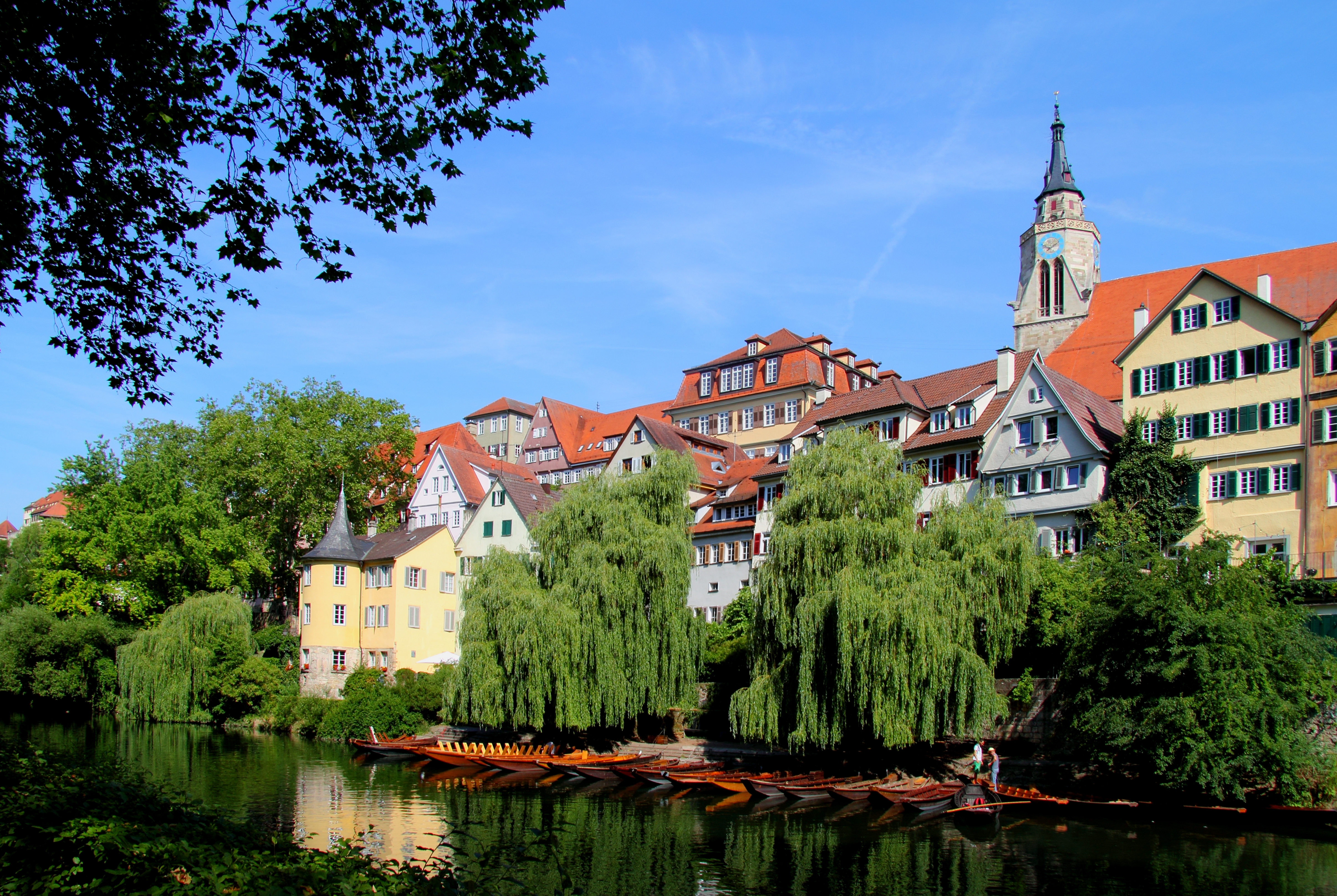|
Neckties
A necktie, or simply a tie, is a piece of cloth worn for decorative purposes around the neck, resting under the shirt collar and knotted at the throat, and often draped down the chest. Variants include the ascot, bow, bolo, zipper tie, cravat, and knit. The modern necktie, ascot, and bow tie are descended from the cravat. Neckties are generally unsized but may be available in a longer size. In some cultures, men and boys wear neckties as part of office attire or formal wear. Women wear them less often. Neckties can also be part of a uniform. Neckties are traditionally worn with the top shirt button fastened, and the tie knot resting between the collar points. History Origins The necktie that spread from Europe traces back to Croatian mercenaries serving in France during the Thirty Years' War (1618–1648). These mercenaries from the Military Frontier, wearing their traditional small, knotted neckerchiefs, aroused the interest of the Parisians. Because of the differe ... [...More Info...] [...Related Items...] OR: [Wikipedia] [Google] [Baidu] |
Jabot (neckwear)
A jabot (; from French ''jabot'': a bird's crop) is a decorative clothing-accessory consisting of lace or other fabric falling from the throat, suspended from or attached to a neckband or collar, or simply pinned at the throat. Its current form evolved from the frilling or ruffles decorating the front of a shirt in the 19th century. History In the 17th and 18th centuries, a jabot consisted of cambric or lace edging sewn to both sides of the front opening of a man's shirt, partially visible through a vest/waistcoat worn over it. This style arose around 1650. Jabots made of lace and hanging loose from the neck were an essential component of upper class, male fashion in the baroque period. In the late 19th century a jabot would be a cambric or lace bib, for decorating women's clothing. It would be held in place at the neck with a brooch or a sewn-on neckband. Today Jabots survive in the present as components of various official costumes. The white bibs of judges of the Federal C ... [...More Info...] [...Related Items...] OR: [Wikipedia] [Google] [Baidu] |
Ascot Tie
An ascot tie or ascot is a neckband with wide pointed wings, traditionally made of pale grey patterned silk. This wide tie is usually patterned, folded over, and fastened with a tie pin or tie clip. It is usually reserved for formal wear with morning dress for daytime weddings and worn with a cutaway morning coat and striped grey formal trousers. This type of dress cravat is made of a thicker, woven type of silk similar to a modern tie and is traditionally either grey or black. A more casual form of ascot is in British English called a cravat, or sometimes as a day cravat to distinguish it from the formal ascot or dress cravat. The casual form is made from a thinner woven silk that is more comfortable when worn against the skin, often with ornate and colourful printed patterns. History The ascot is descended from the earlier type of cravat widespread in the early 19th century, most notably during the age of Beau Brummell, made of heavily starched linen and elaborately tied aro ... [...More Info...] [...Related Items...] OR: [Wikipedia] [Google] [Baidu] |
Bow Tie
The bow tie is a type of necktie. A modern bow tie is tied using a common shoelace knot, which is also called the bow knot for that reason. It consists of a ribbon of fabric tied around the collar of a shirt in a symmetrical manner so that the two opposite ends form loops. There are generally three types of bow ties: the pre-tied, the clip-on, and the self-tie. Pre-tied bow ties are ties in which the distinctive bow is sewn onto a band that goes around the neck and clips to secure. Some "clip-ons" dispense with the band altogether, instead clipping straight to the collar. The traditional bow tie, consisting of a strip of cloth that the wearer has to tie by hand, is also known as a "self-tie", "tie-it-yourself", or "freestyle" bow tie. Bow ties may be made of any fabric material, but most are made from silk, polyester, cotton, or a mixture of fabrics. Some fabrics (e.g., wool or velvet) are much less common for bow ties than for ordinary four-in-hand neckties. Origin and hist ... [...More Info...] [...Related Items...] OR: [Wikipedia] [Google] [Baidu] |
Bolo Tie
A bolo tie (sometimes bola tie or shoestring necktie) is a type of necktie consisting of a piece of cord or braided leather with decorative metal tips (called aiguillettes) and secured with an ornamental clasp or slide. Popularity In the United States, bolo ties are widely associated with Western wear and are generally most common in the western areas of the country. Bolo tie slides and tips in silver have been part of Hopi, Navajo, Zuni, and Puebloan silversmithing traditions since the mid-20th century. The bolo tie was made the official neckwear of Arizona on April 22, 1971 by Governor Jack Williams. New Mexico passed a non-binding measure to designate the bolo as the state's official neckwear in 1987. On March 13, 2007, New Mexico Governor Bill Richardson signed into law that the bolo tie was the state's official tie. Also in 2007, the bolo tie was named the official tie of Texas. In the United Kingdom, bolo ties are known as bootlace ties. They were popular with 1950s Ted ... [...More Info...] [...Related Items...] OR: [Wikipedia] [Google] [Baidu] |
Cravat (early)
The cravat () is a neckband, the forerunner of the modern tailored necktie and bow tie, originating from a style worn by members of the 17th century military unit known as the Croats. The modern British "cravat" is called an "ascot" in American English. From the end of the sixteenth century, the term ''band'' applied to any long-strip neckcloth that was not a ruff. The ruff, a starched, pleated white linen strip, originated earlier in the sixteenth century as a neckcloth (readily changeable, to minimize the soiling of a doublet), as a bib, or as a napkin. A band could be either a plain, attached shirt collar, or a detachable "falling band" that draped over the doublet collar. It is possible that initially, cravats were worn to hide soil on shirts. History According to 1828 encyclopedic ''The art of tying the cravat: demonstrated in sixteen lessons'', the Romans were the first to wear knotted kerchiefs around their neck, but the modern version of the cravat (French: ''la crav ... [...More Info...] [...Related Items...] OR: [Wikipedia] [Google] [Baidu] |
Stock Tie
A stock tie, or stock, is a style of neck wear. Originally a form of neck-cloth that was often stiffened and usually close-fitting, formerly worn by men generally, but post-nineteenth century only in use in military uniforms. Another type of stock is worn by certain clergy and consists of black silk or other fabric, that falls over the chest and is secured by a band around the neck. Equestrians wear a stock tie around the neck when dressed formally for a hunt or certain competitive events. Most equestrian competition rules require it to be white. It is mandated attire for use in dressage and the dressage phase of eventing. Use of the stock tie also is seen in show jumping and fox hunting. The stock tie continues to be in fashion for equestrians. History The stock tie was worn by gentlemen as everyday apparel in the eighteenth and nineteenth centuries. It became more of a formal tie in the later nineteenth century. These old stock ties often were black or white. They were mad ... [...More Info...] [...Related Items...] OR: [Wikipedia] [Google] [Baidu] |
Como
Como (, ; lmo, Còmm, label=Comasco dialect, Comasco , or ; lat, Novum Comum; rm, Com; french: Côme) is a city and ''comune'' in Lombardy, Italy. It is the administrative capital of the Province of Como. Its proximity to Lake Como and to the Alps has made Como a tourist destination, and the city contains numerous works of art, churches, gardens, museums, theatres, parks, and palaces: the ''Como Cathedral, Duomo'', seat of the Diocese of Como; the Basilica of Sant'Abbondio; the Villa Olmo; the public gardens with the Tempio Voltiano; the Teatro Sociale; the ''Broletto'' or the city's medieval town hall; and the 20th-century Casa del Fascio (Como), Casa del Fascio. With 215,320 overnight guests in 2013, Como was the fourth-most visited city in Lombardy after Milan, Bergamo, and Brescia. In 2018, Como surpassed Bergamo becoming the third most visited city in Lombardy with 1.4 million arrivals. Como was the birthplace of many historical figures, including the poet Caeciliu ... [...More Info...] [...Related Items...] OR: [Wikipedia] [Google] [Baidu] |
Croatia
, image_flag = Flag of Croatia.svg , image_coat = Coat of arms of Croatia.svg , anthem = "Lijepa naša domovino"("Our Beautiful Homeland") , image_map = , map_caption = , capital = Zagreb , coordinates = , largest_city = capital , official_languages = Croatian , languages_type = Writing system , languages = Latin , ethnic_groups = , ethnic_groups_year = 2021 , religion = , religion_year = 2021 , demonym = , government_type = Unitary parliamentary republic , leader_title1 = President , leader_name1 = Zoran Milanović , leader_title2 = Prime Minister , leader_name2 = Andrej Plenković , leader_title3 = Speaker of Parliament , leader_name3 = Gordan Jandroković , legislature = Sabor , sovereignty_type ... [...More Info...] [...Related Items...] OR: [Wikipedia] [Google] [Baidu] |
Dublin
Dublin (; , or ) is the capital and largest city of Republic of Ireland, Ireland. On a bay at the mouth of the River Liffey, it is in the Provinces of Ireland, province of Leinster, bordered on the south by the Dublin Mountains, a part of the Wicklow Mountains range. At the 2016 census of Ireland, 2016 census it had a population of 1,173,179, while the preliminary results of the 2022 census of Ireland, 2022 census recorded that County Dublin as a whole had a population of 1,450,701, and that the population of the Greater Dublin Area was over 2 million, or roughly 40% of the Republic of Ireland's total population. A settlement was established in the area by the Gaels during or before the 7th century, followed by the Vikings. As the Kings of Dublin, Kingdom of Dublin grew, it became Ireland's principal settlement by the 12th century Anglo-Norman invasion of Ireland. The city expanded rapidly from the 17th century and was briefly the second largest in the British Empire and sixt ... [...More Info...] [...Related Items...] OR: [Wikipedia] [Google] [Baidu] |
Tübingen
Tübingen (, , Swabian: ''Dibenga'') is a traditional university city in central Baden-Württemberg, Germany. It is situated south of the state capital, Stuttgart, and developed on both sides of the Neckar and Ammer rivers. about one in three of the 90,000 people living in Tübingen is a student. As of the 2018/2019 winter semester, 27,665 students attend the Eberhard Karls University of Tübingen. The city has the lowest median age in Germany, in part due to its status as a university city. As of December 31, 2015, the average age of a citizen of Tübingen is 39.1 years. The city is known for its veganism and environmentalism. Immediately north of the city lies the Schönbuch, a densely wooded nature park. The Swabian Alb mountains rise about (beeline Tübingen City to Roßberg - 869 m) to the southeast of Tübingen. The Ammer and Steinlach rivers are tributaries of the Neckar river, which flows in an easterly direction through the city, just south of the medieval old t ... [...More Info...] [...Related Items...] OR: [Wikipedia] [Google] [Baidu] |
HH Polizeihauptmeister MZ
HH may refer to: Organizations * Happy Hippie Foundation, a non-profit organization founded by Miley Cyrus * Hartmann House Preparatory School, an independent preparatory school in Harare, Zimbabwe * Heirs Holdings, a Nigerian conglomerate with diversified interests * Helly Hansen, a Norwegian brand specializing in clothing and gear for oceans and mountains * Heywood Hill, a bookshop in London Science and technology * Hh, a signalling molecule in Drosophila named for the Hedgehog signaling pathway * hh blood group, a rare blood type * Henderson–Hasselbalch equation, in biology and chemistry * Herbig–Haro object, in astronomy * Hitchhiker Program, a NASA program established in 1984 * Hodgkin–Huxley model, an electrical model of neurons * Microsoft Compiled HTML Help (hh.exe) * Hereditary haemochromatosis Transportation * HH (Court Street Shuttle) a defunct line on the New York City Subway from 1936 to 1946 * HH (Rockaway Shuttle), from 1962 to 1972 * HH Ferry route between ... [...More Info...] [...Related Items...] OR: [Wikipedia] [Google] [Baidu] |
Tokyo
Tokyo (; ja, 東京, , ), officially the Tokyo Metropolis ( ja, 東京都, label=none, ), is the capital and largest city of Japan. Formerly known as Edo, its metropolitan area () is the most populous in the world, with an estimated 37.468 million residents ; the city proper has a population of 13.99 million people. Located at the head of Tokyo Bay, the prefecture forms part of the Kantō region on the central coast of Honshu, Japan's largest island. Tokyo serves as Japan's economic center and is the seat of both the Japanese government and the Emperor of Japan. Originally a fishing village named Edo, the city became politically prominent in 1603, when it became the seat of the Tokugawa shogunate. By the mid-18th century, Edo was one of the most populous cities in the world with a population of over one million people. Following the Meiji Restoration of 1868, the imperial capital in Kyoto was moved to Edo, which was renamed "Tokyo" (). Tokyo was devastate ... [...More Info...] [...Related Items...] OR: [Wikipedia] [Google] [Baidu] |




.jpg)



